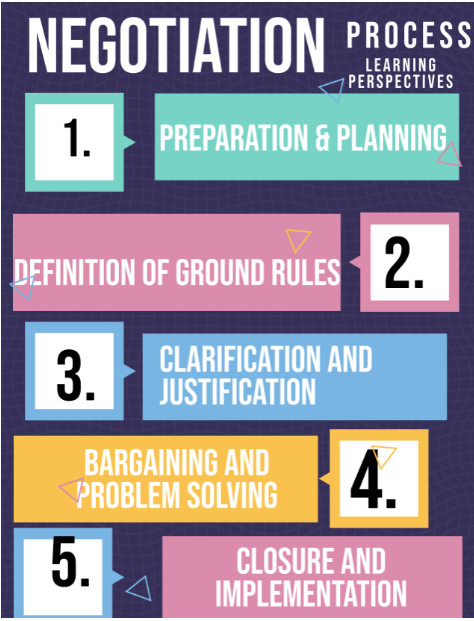Movie Case Study
The above scene shows a young Steve Jobs (played by Ashton Kutcher) convincing the shopkeeper for doing business with him. This blog, Learning Perspectives will explore the meaning of negotiations.
Understanding Negotiations:
Negotiation is a process in which two or more parties attempt to agree or exchange goods and services at an agreed exchange rate between them. This scene demonstrates the negotiation process beautifully.
The negotiation process comprises 5 stages namely:
- Preparation and Planning
- Definition of ground rules
- Clarification and Justification
- Bargaining and Problem Solving
- Closure and Implementation
Preparation and planning:
It means understanding what’s your goal and what needs to be achieved. In the scene above Steve Jobs is negotiating with Paul Terrel. Steve jobs need money to build more computers (objective) and Paul is a computer store owner.
After planning comes, devising your strategy. Just like chess players who have a strategy devised, knowing how the opponent might react, similarly when negotiating, having a BATNA is essential.
BATNA means ‘Best alternative to a negotiated agreement’.
Even though Steve has no offers on the table and has a weaker position, he negotiates with Paul by saying he has many offers and Paul isn’t the only interested party. These sentences make his position stronger. He continues to say that he “believes they both are kindred spirits and want to give an opportunity to him”
Paul feels good at that moment and his first gut instinct is to give him the business for “$400 per machine for 50 units and the money would be paid at the time of delivery.”
The unit here would mean a number of computers that he’ll be delivering.
Which Steve negotiates by saying “$400 for 100 units with 1/3rd to be paid upfront.”

Ground rules:
It means what is to be delivered, when, how much, and so on. Ground rules include asking questions such as who will be negotiating. what are the time constraints, if any? To what issues will negotiation be limited? Will there be a specific procedure if an impasse is reached?
Clarification and Justification:
When initial positions have been exchanged, both you and another party will explain, justify, and bolster your original demands. This doesn’t have to be confrontational. This process needs to rather be educating and informing each other on the issues, and why they are important.
Bargaining and Problem Solving:
The essence of negotiation is given and taken when both parties feel that they have made a reasonable agreement. It is here where concessions will undoubtedly need to be made by both parties.
Closure and Implementation:
It involves necessary implementation and monitoring. Lease terms, labor-management negotiations, buying a piece of real estate,
and anything that is specified in a formal contract
Finally one formalizes the agreement with either written consent or through a formal handshake.









[…] to the scene where we saw how Alladin, in his attempt to save the girl, tries to negotiate with the bread vendor. He says that he will give him the bracelet and the vendor readily agrees. […]